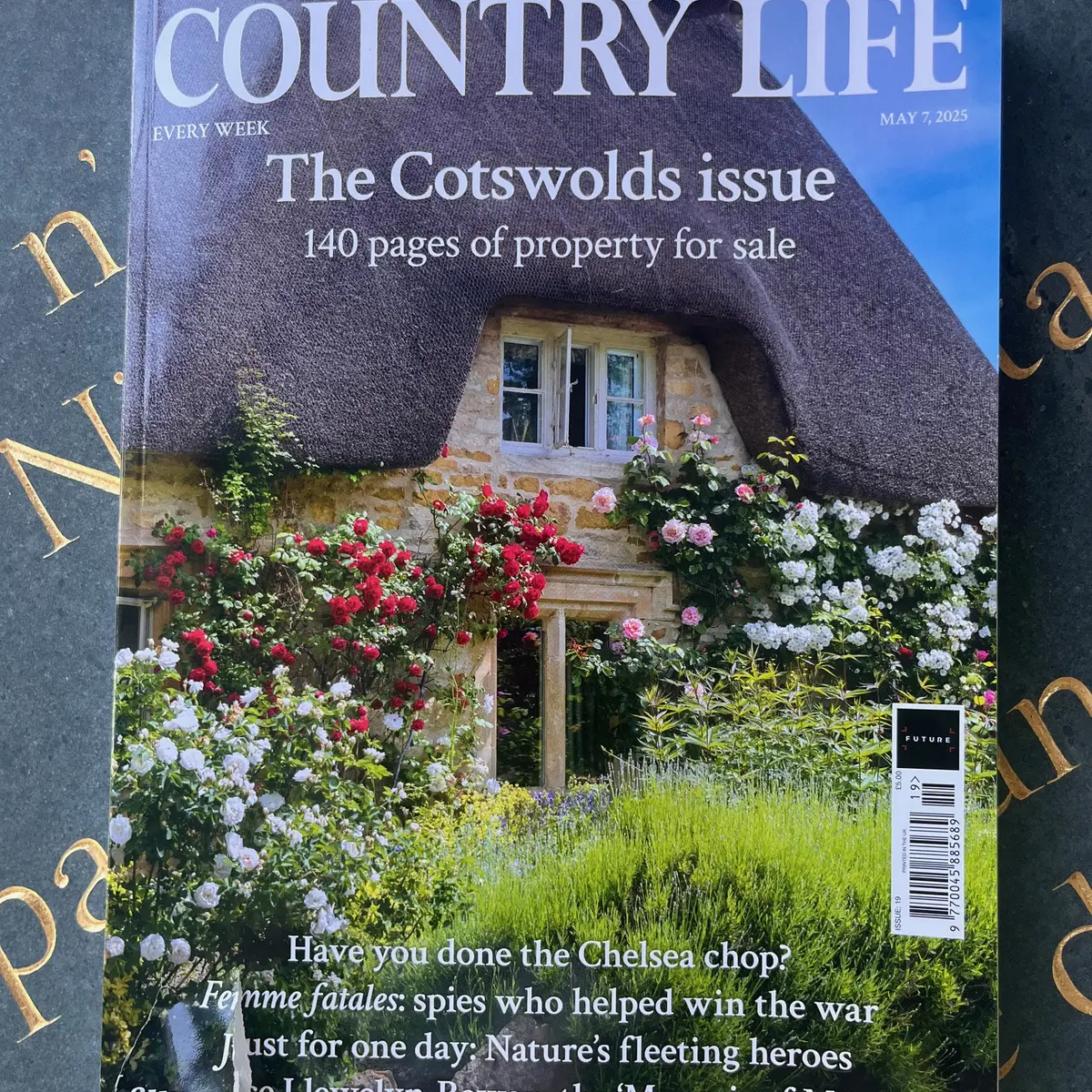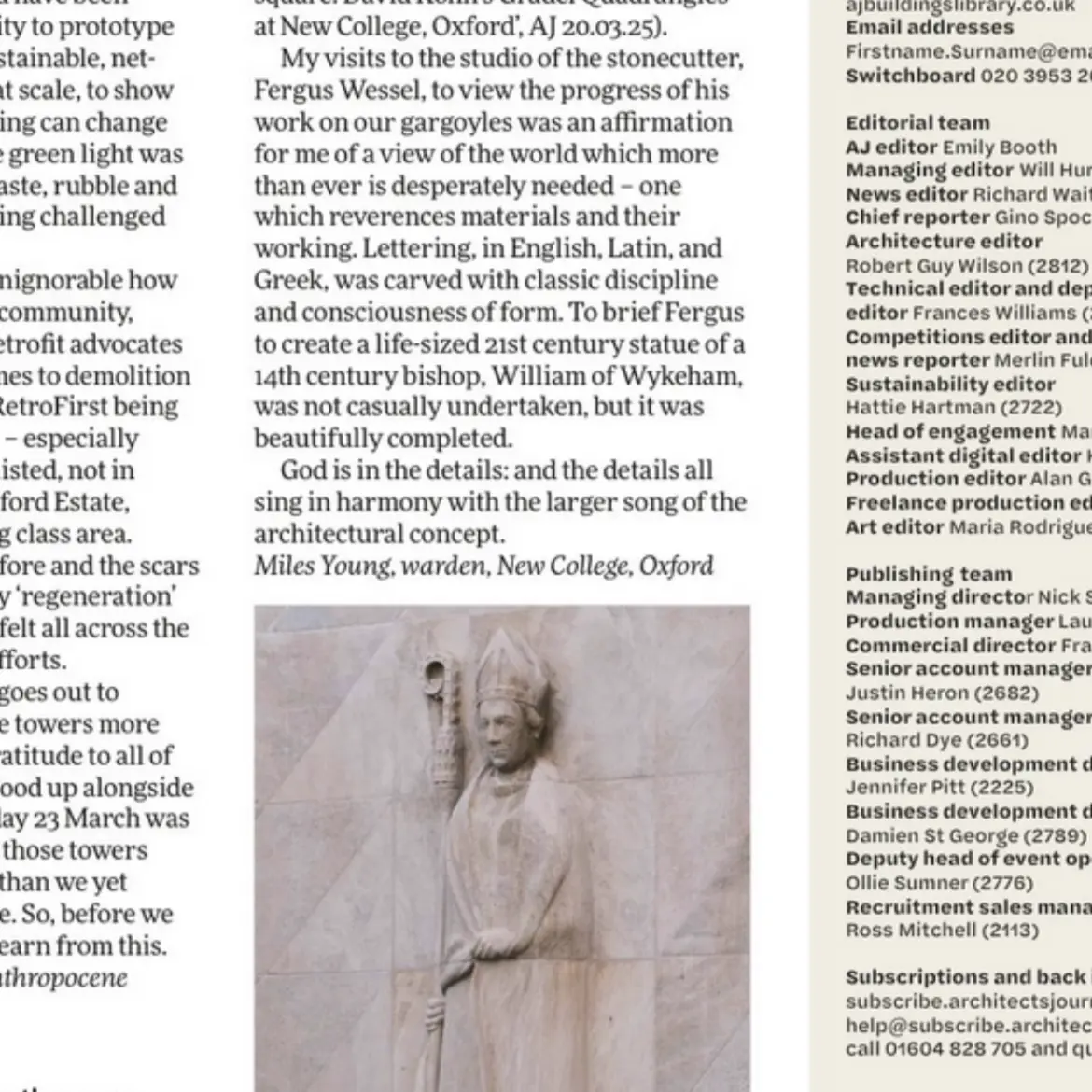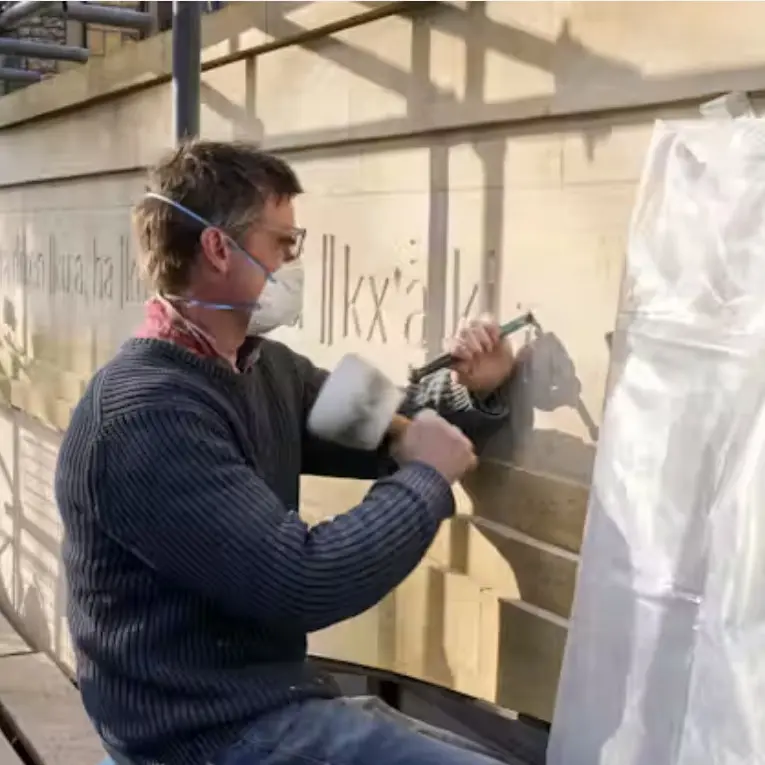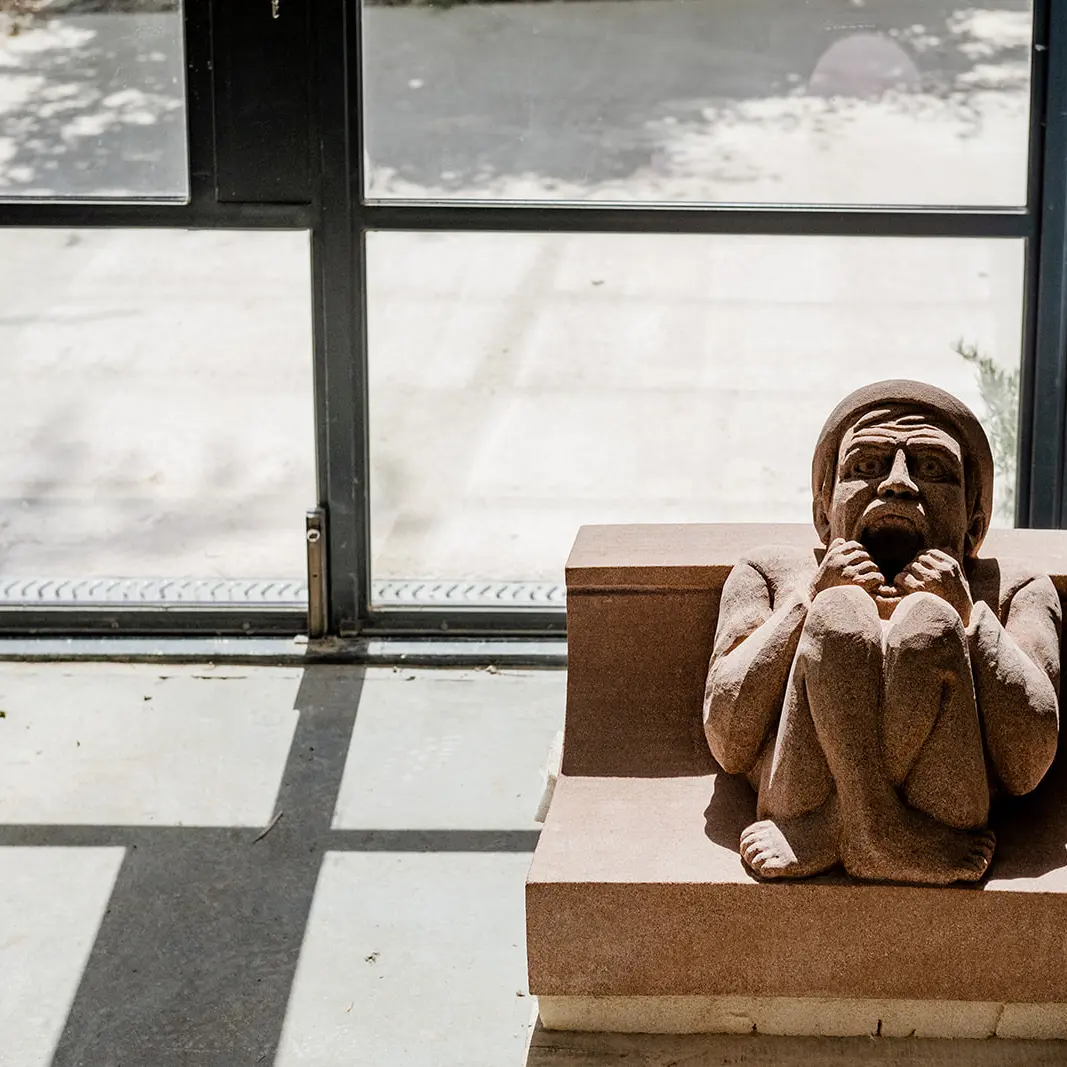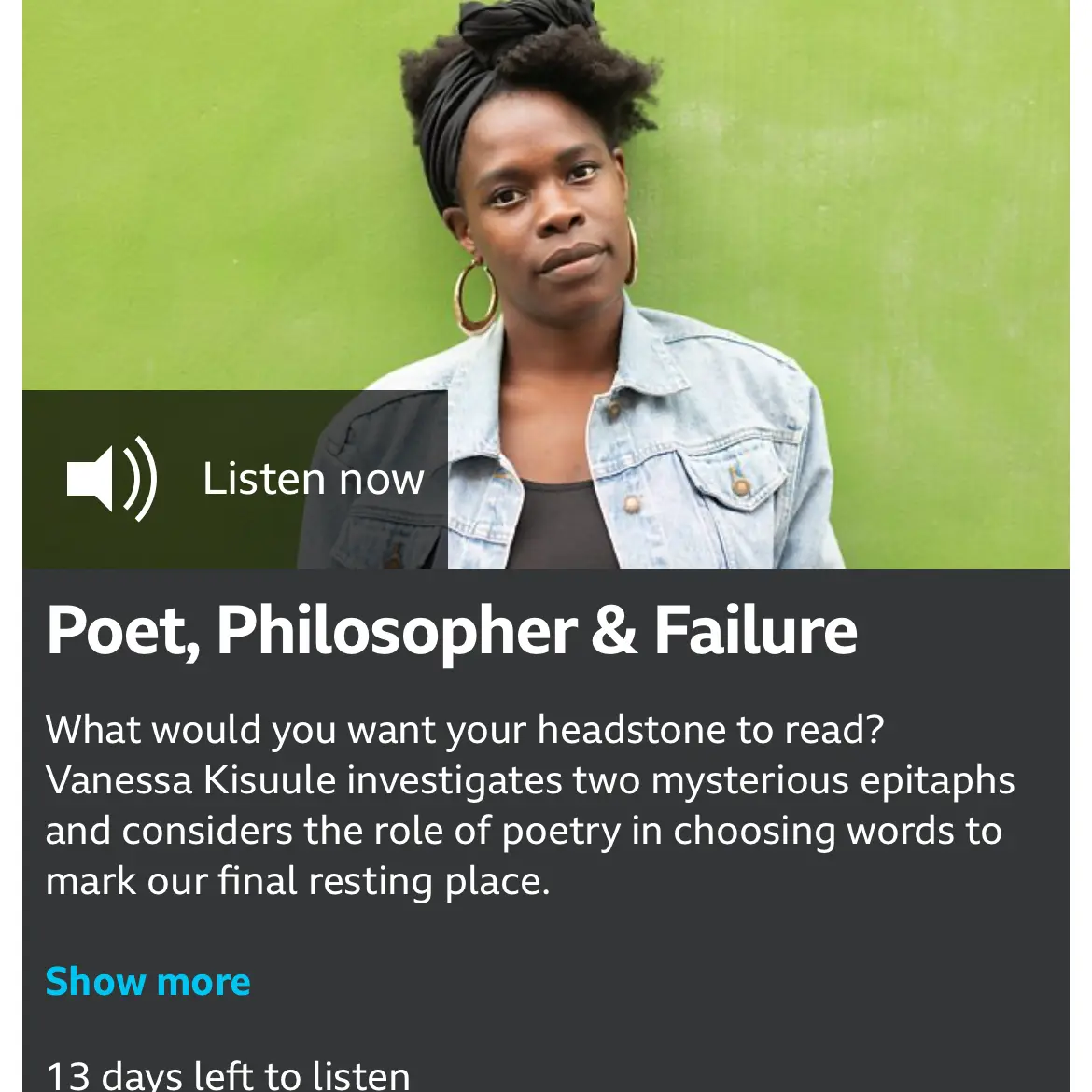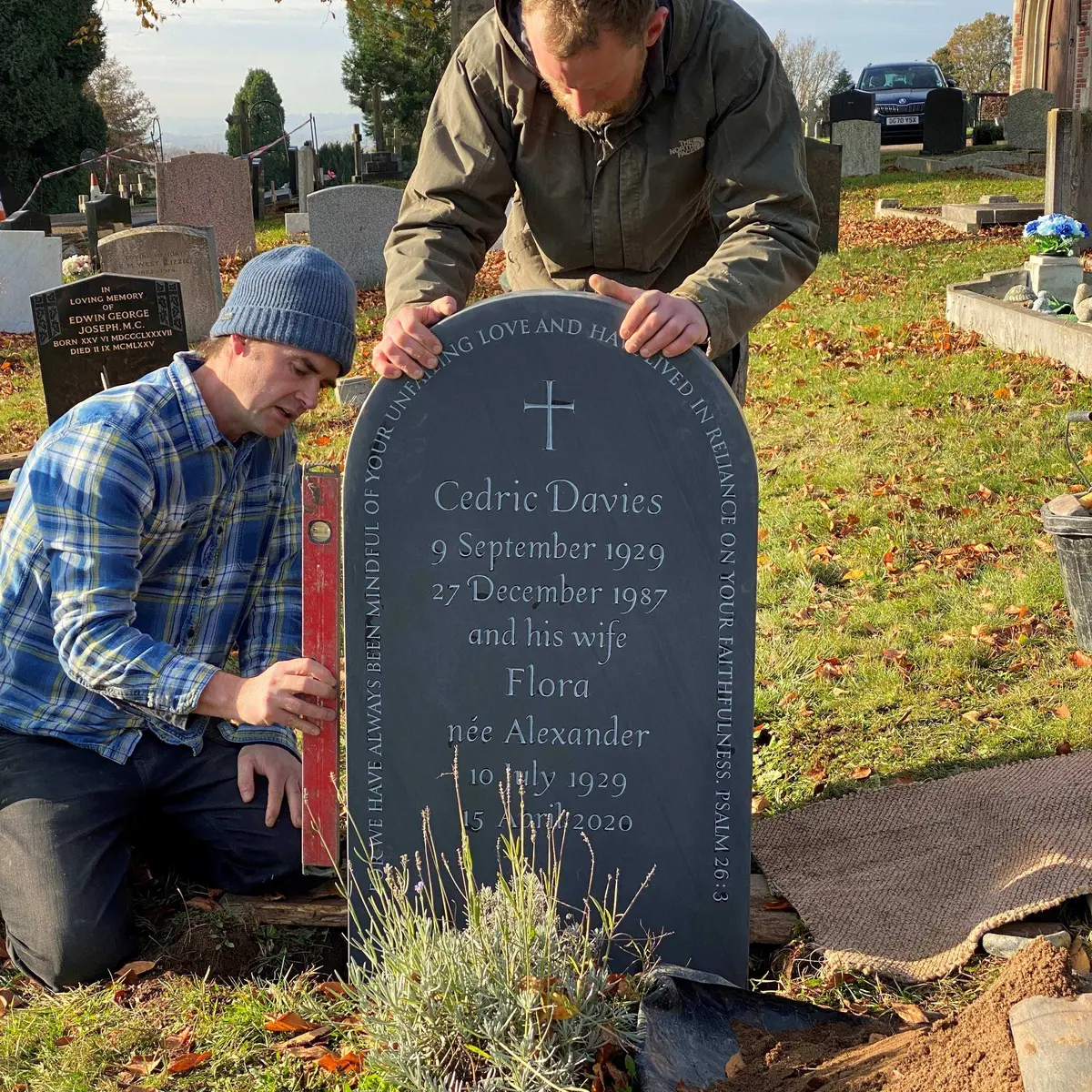By using this website, you agree to our privacy policy
×Cemetery Regulations for Installing Headstones - NAMM Standard BS8415
Whenever possible we install (fix) our headstones using the "Monolith" method, which fully complies with British Safety Standard BS8415 which must be met by most cemeteries. This method is clearly approved by the National Association of Memorial Masons.
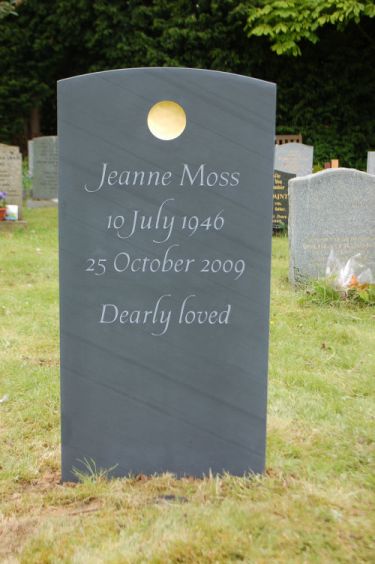
Many cemeteries ask that we use a Ground Anchor fixing method, falsely believing that this method is the only one that complies with BS8415, but our method is not only compliant, but we believe also safer. The monolith method (see above example) does not involve the use of any ground anchor, and it involves setting at least a third of the height of the headstone below the ground into a NAMM approved concrete shoe. For small headstones, this will be more than a third as at least 325mm must sit below the ground. There will not be any base, and the headstone is seen to go straight into the ground which looks very graceful.
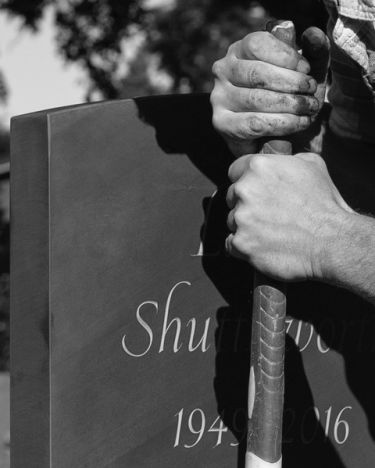
We always advise waiting at least 12 months after the burial before we install our headstones- this ensures that the ground will be compacted and that the headstones will not start to lean. On occasion, when this is unavoidable, and the headstone starts to lean, it is very easy to go back and straighten the stone up. This would be very difficult if we were using the Dowel fixing method.
Before commissioning a headstone from us please check with the cemetery that they allow the monolith fixing method. If they say it is not allowed, we often find that on having a conversation with the cemetery manager, we can convince them that the monolith method is compliant with current safety standards.
The only other time we cannot use the fixing method is when there is a concrete beam or footing already in place, in which case the dowel fixing method must be used. Below is an example of a headstone fixed onto a base using the dowel method. The base itself is set onto a concrete foundation.
For further details of our fixing methods see this blog post.


Above is an extract from the NAMM Code of Working Practise 2019, which clearly describes the NAMM method we use.
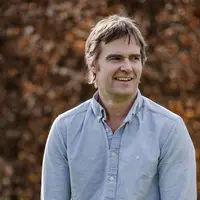
Fergus Wessel
Designer and letter-carver
Fergus created Stoneletters Studio in 2003, after training at the Kindersley Workshop. He is a member of the prestigious Master Carver's Association.


Request our free booklet today
- © 2025 Stoneletters
- Legal notice
- Privacy policy
- Disclaimer
